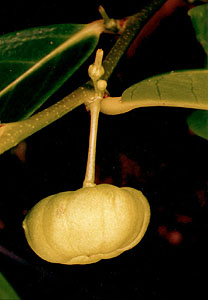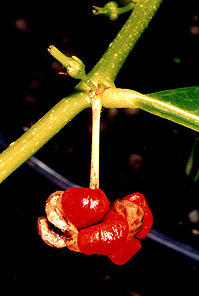| Overview |
| Corner and the durian theory |
| Ashton, Fedorov and evolutionary processes |
| Gentry's hypotheses |
| applications • pollination • breeding systems • allozyme analysis • architecture |
| References and further reading |
| Questions |

He hypothesised that as forests became more complex individuals of the same species would be less likely to be close to each other, and therefore successful cross pollination would be less likely to occur. As these individuals received less pollen from conspecifics they would become facultatively inbreeding relying on self pollen for fertilisation. This process would become more common until the individuals were completely self pollinated and eventually became separate species through sympatry.
Ashton (1969, 1976,1993) took an opposing view to Fedorov in that he felt that the ‘isolation and inbreeding route’ for evolution in forest would lead to an evolutionary dead end in which there would be a preponderance of apomixis and general decrease in genetic variability.
He argued that there would be more likely to be more outcrossing occurring in tropical forests given their great age, the time for accumulation of new species and the existence of conditions favourable for the maintenance of these species, namely specialised’ niches’. A high level of outcrossing ensures that genetic variability is maintained thus providing the potential for variation in individual offspring. These would diversify into the niches present in forest and be maintained as separate sympatric species.

Much of the recent field research has been based on these two hypotheses, by trying to determine which process may be more commonly operating in tropical forest. There have also been various comparisons carried out between different geographic regions and based on various environmental factors. Examples of these projects can be seen in the applcations section.
NOW TEST your understanding of the basic principles by answering some questions.